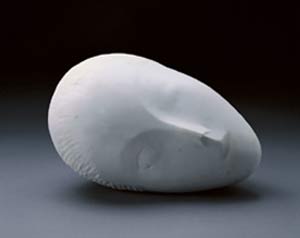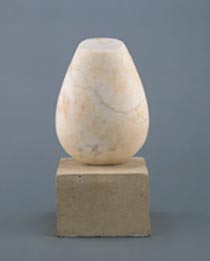Project Proposal: Constantin Brancusi: the essence of things
"There are imbeciles who call my work abstract; that which they call abstract is the most realistic, because what is real is not the exterior form but the idea, the essence of things." -- Constantin Brancusi


(Photo credits: Tate Modern) Above left: Sleeping Muse, 1909-1910; above right: Torso of a Young Girl, 1922
Because this course emphasizes the link between humans and things while at the same time encourages us to approach and think about the material world in new ways, this project seems like a unique opportunity for me to step completely away from my usual topical-methodological “academic repertoire” of archaeology-science-technology-glass. Instead of performing as graduate-student Carrie (who aims to write objectively, scientifically, and academically—and thus impersonally, dryly, and generally—about a departmentally-specified set of entities), I am going to think and talk like the subjective Carrie that I am: a Carrie of a certain time, place, and conceptual upbringing who has tastes, preferences, strengths, weakness, world-views, narrow-mindedness, opinions, and biases. I am going to think deeply about something that has significantly caught my attention and influenced my understanding of the world and the things in it: my project is to contemplate how and why the artwork of Constantin Brancusi speaks to me to such an extent that I regard him as my favorite artist.
While in London in 2004, I went to an exhibit at the Tate Modern called “Constantin Brancusi: the essence of things.” Without having any prior knowledge about whom Brancusi was, what media he used, or what his works actually looked like, I was drawn to the exhibit by the title – “the essence of things.” I was skeptical that the essence of a thing could be captured, especially in a sculptural form: I wanted to know what these “things” were, what their “essence” was understood as, and then to judge for myself whether art can actually show the essence of something. Because my ruminations depend so much on the visual, I want to use a wiki to recreate my physical and mental journey through the galleries, describing what I saw, what moved me, and in what ways. What exactly is it about the things he creates that appeals to me? How does my own history, philosophy, and ontology inform my opinions on art, and in turn how are they informed by art?
